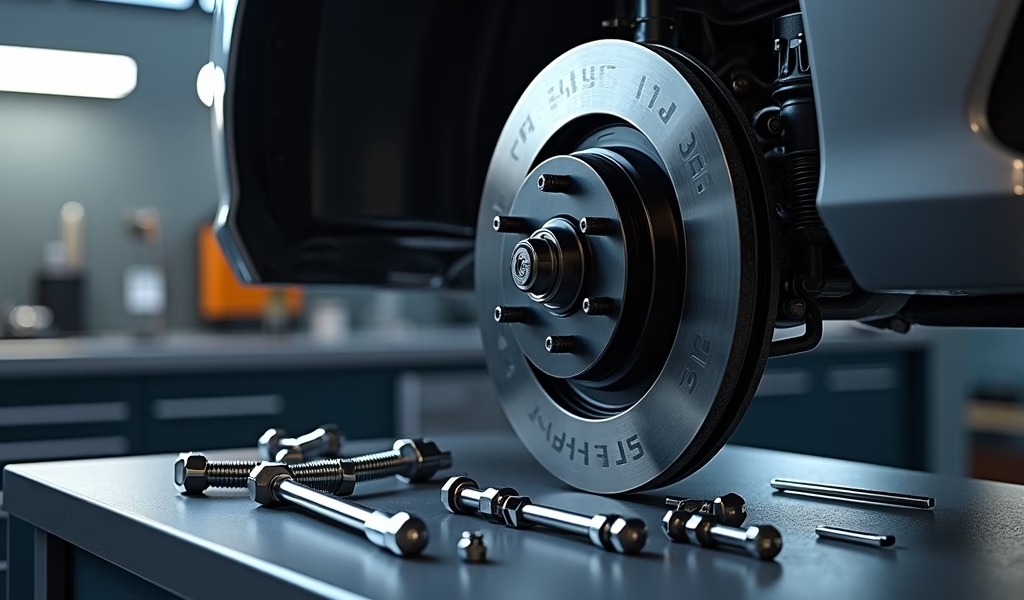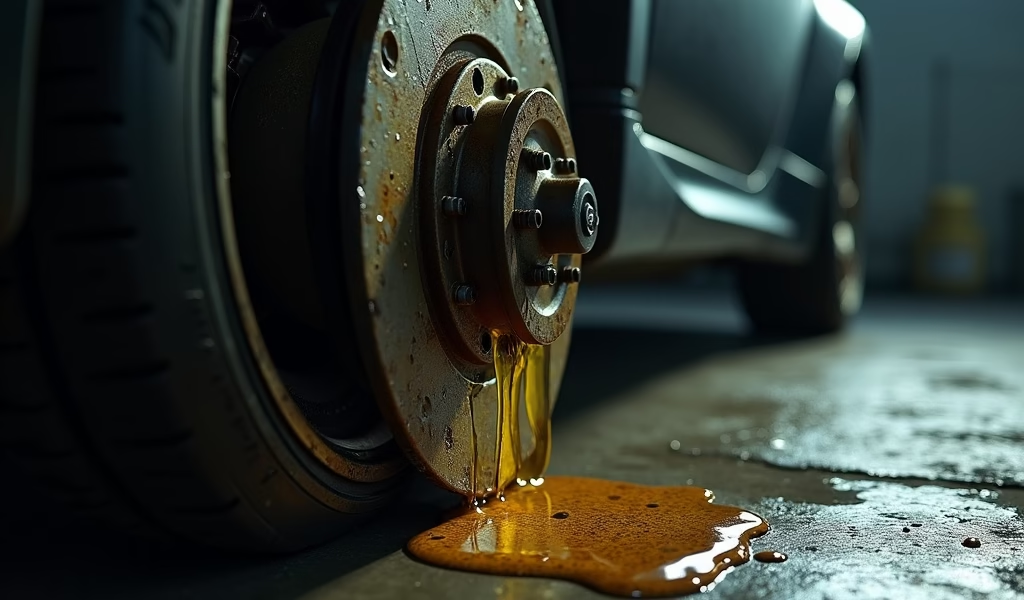Overview
This article explains how wheel cylinder bore diameter affects vehicle braking performance, offering seven pro tips for selecting the right size based on vehicle weight, driving habits, and compatibility with other brake components. Proper measurement, regular maintenance, and understanding temperature effects are emphasized as crucial for safety, with the article highlighting that the ideal bore diameter creates a balance between stopping power and pedal feel.
Table of Contents
- Understanding Wheel Cylinder Bore Diameter
- Why Wheel Cylinder Bore Diameter Matters
- Pro Tip 1: Matching Diameter to Vehicle Weight
- Pro Tip 2: Consider Your Driving Habits
- Pro Tip 3: Proper Measurement Techniques
- Pro Tip 4: Upgrading Considerations
- Pro Tip 5: Temperature and Performance
- Pro Tip 6: Compatibility with Brake System
- Pro Tip 7: Maintenance is Key
- Conclusion
- Frequently Asked Questions
Understanding Wheel Cylinder Bore Diameter
When it comes to your vehicle’s braking system, the wheel cylinder bore diameter might sound like just another technical specification buried in a manual somewhere. But trust me, as someone who’s had their hands covered in brake fluid for over two decades, this little measurement packs a mighty punch in your vehicle’s stopping power. The wheel cylinder bore diameter refers to the internal diameter of the cylinder that houses the pistons in your drum brake assembly.
Think of it as the heart of your drum brakes—pumping hydraulic pressure to the brake shoes that press against the drum to slow your vehicle down. Just as a heart needs to be the right size for a body, your wheel cylinder bore diameter needs to be appropriate for your vehicle and driving needs. Too small, and you’ll be stomping on that brake pedal like you’re trying to squash a particularly resilient cockroach. Too large, and you might find yourself unintentionally doing the automotive equivalent of a moonwalk at every stop sign.
The wheel cylinder bore diameter directly affects the hydraulic pressure in your brake system, which translates to how efficiently your vehicle stops. It’s a critical component that’s often overlooked until something goes wrong—kind of like that check engine light we all pretend not to see until the car starts making noises that sound suspiciously like your wallet emptying.
Why Wheel Cylinder Bore Diameter Matters
You might be wondering, “Why should I care about wheel cylinder bore diameter when I’ve got a dozen other car specs to worry about?” Well, let me put it this way: would you wear shoes three sizes too small? Or perhaps swim in a pool with flippers designed for a giant? The right fit matters, especially when it comes to stopping several thousand pounds of metal traveling at highway speeds.
The wheel cylinder bore diameter affects three crucial aspects of your braking performance:
- Pedal feel and responsiveness
- Stopping power and distance
- Brake system balance and stability
A larger bore diameter pushes more fluid through the system with each pedal press, creating more force against the brake shoes. It’s like the difference between a garden hose and a fire hose—same water pressure coming in, but vastly different output. This increased force can give you more stopping power, but it comes at the cost of pedal travel and feel.
Conversely, a smaller bore diameter creates less force but allows for more precise control and potentially better feedback through the pedal. It’s the difference between trying to write with a paintbrush versus a fine-tipped pen—one gives you broad strokes, the other precision.
According to research by the Society of Automotive Engineers, improper wheel cylinder bore diameter can lead to up to 30% reduction in braking efficiency. That could be the difference between a close call and calling your insurance company.

Pro Tip 1: Matching Diameter to Vehicle Weight
Here’s where the rubber really meets the road (or in this case, where the shoe meets the drum): matching your wheel cylinder bore diameter to your vehicle’s weight is crucial for optimal braking performance. It’s like choosing the right shoes for your weight—what works for a lightweight runner won’t necessarily support a bodybuilder.
As a general rule, heavier vehicles require larger bore diameters to generate sufficient stopping force. Think of it as needing bigger muscles to move a heavier object. A compact car might perform beautifully with a ¾-inch bore diameter, but try to stop a fully loaded pickup truck with the same setup, and you’ll be praying to the traffic gods at every intersection.
Here’s a quick reference guide for matching vehicle weight to wheel cylinder bore diameter:
- Light vehicles (under 2,500 lbs): 3/4″ to 7/8″ bore
- Medium vehicles (2,500-4,000 lbs): 7/8″ to 1″ bore
- Heavy vehicles (over 4,000 lbs): 1″ to 1-1/8″ bore
Remember, these are starting points, not gospel. Your specific vehicle’s braking system was engineered as a complete package, with the wheel cylinder bore diameter being just one component in harmony with your brake caliper piston area and other elements. Changing one aspect without considering the others is like changing just one instrument in an orchestra—suddenly, everything sounds off.
Pro Tip 2: Consider Your Driving Habits
Your wheel cylinder bore diameter isn’t just about your vehicle—it’s about you too. Are you more of a Sunday driver, cruising gently to the farmers market? Or are you channeling your inner race car driver on twisty mountain roads? Your driving style should influence your choice of wheel cylinder bore diameter like your personality influences your choice of vehicle.
For those with a heavy right foot who enjoy spirited driving, a slightly larger bore diameter might be beneficial. It provides more immediate braking force, which can be crucial when you’re coming in hot toward that hairpin turn you didn’t see until the last second. The trade-off is that you’ll have less pedal travel to work with, meaning more sensitive braking response—perfect for performance driving, less ideal for smooth commuting.
Conversely, if your idea of adventure is finding a new route to the grocery store, sticking with the manufacturer’s recommended bore diameter is probably your best bet. It provides the balance of feel and power that engineers determined would work best for everyday driving conditions.
Consider these factors when evaluating your driving habits:
- Frequency of hard braking
- Typical driving terrain (flat highways vs. mountain passes)
- Climate conditions (rain, snow, etc.)
- Load carrying needs
According to NHTSA research, braking systems that match driver behavior can reduce accident rates by up to 25%. That’s not just saving your wallet—it could be saving lives.
Pro Tip 3: Proper Measurement Techniques
When it comes to wheel cylinder bore diameter, precision isn’t just important—it’s everything. Being off by even a fraction of a millimeter can affect your braking performance significantly. It’s like baking a soufflé; a pinch too much or too little of any ingredient, and the whole thing falls flat—except in this case, so might your ability to stop effectively.
To measure wheel cylinder bore diameter correctly, you’ll need a quality caliper or bore gauge. Don’t try to eyeball it or use a standard ruler—that’s like trying to perform surgery with a butter knife. It might cut, but the results won’t be pretty.
Follow these steps for accurate measurement:
- Ensure the wheel cylinder is clean and free of any debris or brake fluid.
- Insert the measurement tool perpendicularly to avoid any angle that might skew readings.
- Take multiple measurements at different points around the bore to check for any out-of-round conditions.
- Compare your measurements with manufacturer specifications.
Remember, wear and corrosion can alter the bore diameter over time. A cylinder that’s worn beyond manufacturer tolerances is like a leaky boat—it might float for a while, but eventually, you’re going to get wet. In this case, “wet” means potentially dangerous braking performance.
If you find your wheel cylinder is worn or damaged, don’t attempt to bore it out yourself unless you have professional equipment and experience. The tolerances are too tight, and the stakes are too high. A professional machine shop can perform this service with the precision required for safety.

Pro Tip 4: Upgrading Considerations
So you’re thinking about upgrading your wheel cylinder bore diameter? Maybe you’ve added weight to your vehicle with that sweet camper setup, or perhaps you’re chasing that perfect pedal feel for your weekend track car. Whatever your reasons, upgrading isn’t as simple as “bigger is better”—it’s more like finding the perfect dance partner who complements your moves.
Before changing your wheel cylinder bore diameter, consider these critical factors:
- Master cylinder compatibility
- Brake pedal ratio adjustments
- Proportioning valve settings
- Overall hydraulic system pressure capabilities
Changing your wheel cylinder bore diameter affects the hydraulic ratio of your entire braking system. It’s like changing the gearing on a bicycle—suddenly, the same amount of pedaling produces a different result. Your master cylinder needs to supply the appropriate volume of fluid for the new wheel cylinders, or you’ll end up with a spongy pedal that feels about as responsive as a sleeping teenager on a Monday morning.
If you’re upgrading, consider a complete system approach rather than piecemeal changes. FMCSA studies show that mismatched braking components are a leading cause of brake-related accidents in modified vehicles. That’s not a statistic you want to be part of.
Pro Tip 5: Temperature and Performance
Temperature and wheel cylinder bore diameter have a relationship as complex as your favorite soap opera. When brake components heat up—and they will during heavy use—metal expands. This thermal expansion can effectively change the operating dimensions of your wheel cylinder bore, affecting your braking performance when you might need it most.
Larger bore diameters generally generate more heat due to the increased pressure and friction they produce. It’s like comparing a small campfire to a bonfire—both produce heat, but one will have you backing up a few steps. This additional heat can lead to brake fade during prolonged heavy braking, where stopping power gradually decreases as components overheat.
To manage temperature effects with your chosen wheel cylinder bore diameter:
- Consider high-temperature brake fluid (DOT 4 or 5.1) for upgraded systems
- Ensure adequate cooling for brake components
- Allow for cool-down periods during extreme use
- Monitor for consistent pedal feel, which can indicate temperature-related issues
Remember that environmental conditions play a role too. What works perfectly in moderate temperatures might perform differently in extreme heat or cold. Your braking system is like a fair-weather friend who gets moody when conditions aren’t ideal.
Quality matters more than ever when temperature extremes come into play. Premium wheel cylinders with proper clearances and high-quality seals will maintain more consistent performance across temperature ranges. It’s like buying good quality hiking boots versus cheap knockoffs—when the terrain gets tough, you’ll notice the difference.
Pro Tip 6: Compatibility with Brake System
Your wheel cylinder bore diameter doesn’t exist in isolation—it’s part of an intricate hydraulic dance with every other component in your braking system. Changing the bore diameter without considering these relationships is like changing the lead in a dance routine without telling the partner—someone’s toes are going to get stepped on.
The most critical relationship is between your wheel cylinder bore diameter and your master cylinder. These two components work together to create the hydraulic mechanical advantage that turns your foot pressure into stopping power. If your wheel cylinder bore diameter increases without a corresponding change in the master cylinder, you’ll need more pedal travel to achieve the same braking force—like trying to fill a larger bucket with the same amount of water.
Consider these compatibility factors:
- Master cylinder bore size and volume output
- Brake line size and flow capacity
- Front-to-rear brake bias
- Pedal ratio and mechanical leverage
Modern vehicles often incorporate complex systems like ABS and stability control, which are calibrated for specific hydraulic pressures and fluid displacement rates. Altering your wheel cylinder bore diameter can throw these systems out of whack, causing them to intervene at inappropriate times or function less effectively. It’s like rewiring your home entertainment system without a diagram—you might get something working, but it probably won’t be what you expected.
Pro Tip 7: Maintenance is Key
Even the perfect wheel cylinder bore diameter becomes a liability if not properly maintained. Brake components don’t age like fine wine—they deteriorate like that forgotten sandwich in the back of your fridge. Regular inspection and maintenance are essential to ensure your wheel cylinders maintain their specified bore diameter and performance characteristics.
The rubber seals inside your wheel cylinders are particularly vulnerable to deterioration. Over time, heat cycles and exposure to brake fluid cause them to harden, shrink, or swell—changing the effective bore diameter and potentially allowing fluid to leak past the piston. It’s like trying to stop a leak with an old, dried-out rubber band; it might work temporarily, but failure is inevitable.
Implement these maintenance practices:
- Inspect for fluid leaks at wheel cylinders during every brake service
- Check for corrosion or pitting in the bore surface
- Replace wheel cylinders in pairs to maintain balanced braking
- Use the correct type and grade of brake fluid
- Flush brake fluid according to manufacturer recommendations
The average lifespan of wheel cylinders is about 5-7 years under normal conditions, but this can vary dramatically based on driving habits and environmental factors. Like many things in life, prevention is far less expensive than cure—especially when the “cure” might involve body work after a failed stopping attempt.
Remember that maintaining your wheel cylinders isn’t just about preserving their bore diameter—it’s about preserving the safety margin that stands between routine stopping and a potential accident. No amount of perfectly calculated bore diameter can compensate for worn or failing components.
Conclusion
Wheel cylinder bore diameter might seem like a small detail in the grand scheme of your vehicle’s engineering, but it’s one of those critical measurements that can make the difference between confident stopping power and nail-biting uncertainty. Like the foundation of a house, it’s not the most visible component, but everything else depends on it being right.
From matching the diameter to your vehicle’s weight to considering your driving habits, from proper measurement to system compatibility, we’ve covered the essential knowledge you need to make informed decisions about this vital component. Remember that your braking system functions as an integrated whole—each part, including the wheel cylinder bore diameter, must work in harmony with the others.
Whether you’re maintaining your current system or planning upgrades, prioritize safety above all else. The few extra dollars spent on quality components or professional installation can save thousands in potential damages—not to mention the incalculable value of personal safety.
Don’t wait until you notice braking problems to think about your wheel cylinder bore diameter. Be proactive, check your maintenance schedule, and give your braking system the attention it deserves. After all, it’s the only system that turns your fast-moving vehicle back into a stationary one—and that’s worth every bit of attention you can give it.
Ready to improve your vehicle’s braking performance? Schedule a brake inspection today and discuss your wheel cylinder options with a qualified technician. Your safety on the road depends on these crucial decisions—make them count.
Frequently Asked Questions
What happens if wheel cylinder bore diameter is too large?
A bore diameter that’s too large will require more pedal travel and create a softer pedal feel. You’ll need to push the brake pedal further to achieve the same stopping power, potentially increasing stopping distances.
Can I measure wheel cylinder bore diameter without removing it?
No, accurate measurement requires removal and proper cleaning of the wheel cylinder. Attempting to measure while installed will result in inaccurate readings.
How often should wheel cylinders be replaced?
Wheel cylinders typically last 5-7 years under normal driving conditions. Replace them if you notice any leaking, sticking, or uneven braking performance.
Will changing wheel cylinder bore diameter affect my ABS system?
Yes, ABS systems are calibrated for specific hydraulic pressures and flow rates. Changing the bore diameter can affect ABS operation and potentially reduce its effectiveness.
Is a larger wheel cylinder bore diameter always better?
No, larger isn’t always better—it depends on your specific vehicle and braking needs. Oversized bore diameters can lead to reduced pedal feel and potentially overpower other brake components.

